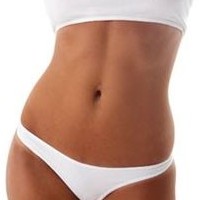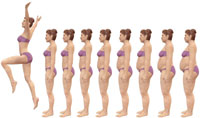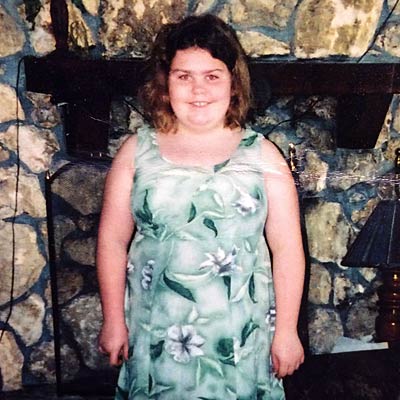Get Your Weight Loss On the right track With The Low Calorie Diet Plan
Searching for a quickrapid and simple way to shed a few pounds so that you can fit into that tiny black dress of your dreams or just to getback your pre-pregnancy figure? Numerous diets are proclaiming to have amazing weight loss results. As a certified dietitian, my professional instinct is to gun them down as non-scientific gibberish. If you wish to drop some body fat in a controlled and healthy manner, I would strongly propose the low calorie diet plan. Research has shown that this diet works well and should be strongly taken into consideration for a weight loss plan.
Let’s get the basics right before I proceed on with the low calorie diet plan. The energy that we require for our daily bodily functions come from the food we eat and this can be calculated in calories(kcal). So what’s with all the hype about calories? You will put on weight if you do not watch your calories and eat more than what your body needs.
Calorie in > Calorie out = Weight gain
Now that you know how weight gain happens, I will show you through a 3 step approach to make the low calorie diet plan effective for you.
Step 1: How many calories do you need in a day
This would depend on factors like your basic metabolic rate (BMR) and activity level. You can calculate your BMR based on the following equations.
Women:
BMR = 655 + (9.6 X weight in kilos) + (1.8 X height in cm) – (4.7 X age in years)
Men:
BMR = 66 + (13.7 X weight in kilos) + (5 X height in cm) – (6.8 X age in years)
To estimate your daily calorie requirement, multiply your BMR using the following formulas:
Sedentary (Your only exercise is typing on the keyboard)
(BMR x 20 percent) + BMR
Lightly active (You exercise 1-3 times a week)
(BMR x 30 percent) + BMR
Moderately active (You exercise 3-5 times a week)
(BMR x 40 percent) + BMR
Very active (You exercise intensely on a daily basis)
(BMR x 50 percent) + BMR
Extra active (You do hard labor or are in athletic training)
(BMR x 60 percent) + BMR
Now let’s be realistic. Majority of us will be in the category of lightly active. So let me give you an example on how it works. The projected calorie requirement for a 47 year old sedentary woman who is 68kg and 163cm tall will be:
BMR = 655 + (9.6 X 68) + (1.8 X 163) – (4.7 X 47) = 1380 kcal
Total daily calorie requirement = (1380 x 0.2) + 1380 = 1656 kcal
Just so you know, a regular western diet consists of 3000-3500kcals and that is twice what an average female requires. It comes as no surprise as to why the obesity rate is growing at such an alarming rate.
Step 2: How many calories do you need to cut out from your diet
For your weight to come off, you need to eat less calories than necessary. A daily deficit of about 300-500kcal would be a good place to start.
A female that is eating 1150kcal daily as opposed to her required 1656kcal will lose about 1 pound after a week . This is in theory. I personally do not recommend anyone to consume <1200 kcal per day as this will cause the body to go into 'energy-saving' mode and greatly slow down your metabolic rate.
3500kcal deficit = 1 pound of weight loss
If you goal is to lose 20 pounds, there will have to be a calorie deficit of 70000kcal. Bear in mind that the calorie deficit has to be done gradually and not an immediate change.
If you are cutting your calories correctly, you weight should come off about 1-3 pounds a week. Anything more is too much
Step 3: Keep a food diary and determine what needs to be cut out
You will get better success from your diet if you note down what you eat. You will discover that you might be consuming more calories than needed.
For 3 days, make sure you record down every single little thing that you swallow. Don't leave out the tiny details of your meals. .
There are a couple of resources you can find on the internet to help compute the calories you are getting from your meals.
Go through your list and see what are the items that have been contributing mostly 'useless calories'. You can easily plan a calorie deficit by reducing the portions from your recorded meals or by cutting out fatty stuff.
As a dietitian, writing meal plans is something I enjoy doing. Here is an example of a healthylow-calorie meal plan.
Breakfast:
Half a wholegrain bagel with a thin spread of light cream cheese (300kcal)
1 glass of low fat milk (90kcal)
Mid-morning snack:
1 cup of Low-fat yoghurt (130kcal)
Lunch:
Wholegrain sandwich bread, with a spread of mustard, salad veggies and lean meat (chicken/beef) (350kcal)
1 serving Minestrone soup (150 kcal)
Afternoon snack:
1 serving of fresh fruit (70 kcal)
Dinner:
Half cup of pasta with tomato sauce + 1 palm size grilled meat/fish or chicken OR half cup of lean mince (400kcal)
Side salad with fat-free dressing (70 kcal)
1 serving of fresh fruit (70 kcal)
Total Calories: 1630 kcal
The example above is just a simple meal plan which you can tailor to your own dietary taste or needs. If you follow through with the food diary activity and get yourself familiarized with the general calorie content of foods, you would have already known by now what are the high calorie foods that you need to reduce your intake of.
Here are some tips to cut down calories from your diet easily and effortlessly
1) Switch from a full strength soda to a no-sugar added drink
2) Use low fat sauces and dressings
3) Less fruit juice and more real fruits
4) Cut the amount of fat you use in cooking by half
5) Always choose lean cuts of meat
6) Reducing your portion sizes by a quarter
7) Limiting fried foods to no more than once a week
8) Changing to low fat dairy products
9) No excessive drinking at parties or when with friends
You need to be consistent with your calorie deficit for the low calorie diet plan to work. Celebrate small successes in your weight loss by giving yourself a little treat of your favorite dessert. Do not feel discouraged should you have exceeded your calorie intake for the day. It isn’t what you consume in a day but the cumulative efforts over a period of time that really matters in the battle against the bulges.
Trained as a dietitian and nutritionist, Kelly Kims has worked her way through hospitals and private clinics. She is an expert on nutritional therapy for weight loss, be it high protein diet plans to very low calorie liquid diets, Kims offers practical weight management techniques for overweight and obese individuals and even women seeking to regain their figure after pregnancy. As an accredited sports dietitian, Kims also educates fitness and sports professionals on performance nutrition. Together with her partner, she runs http://quickeasydietsthatwork.com. An one stop site that offers easy diets that work, exercise strategies and diet-friendly recipes.
-
Has Anyone Tried Fat Burning Furnace
Rob Poulos, who has fought against his overweight since his childhood.
-
Developing A Good Personality By Losing The Weight At Meridian
Survival of the fittest is a well known saying. The person who is fit
-
Raspberry Ketones Review - Is Raspberry Ketone the Complete Solution to Your Weight Loss Challenge?
To lose weight, you need to burn more calories than you take in. Us
-
5 Ways to Have a Healthier Thanksgiving
-
Can You Really Measure Your Heart Rate on a Treadmill?
Experts say it’s important to monitor your heart rate while exercisi
-
Fat Loss Diet For Dummies
Fat loss diets and dieting has been around for some time. T
- DON'T MISS
- Ways To Lighten Your Load Effectively
- Ton Your Abs
- Foods That Causes Belly Fat – Avoid These Fat Gaining Foods
- Think You Look Fat? Do Something About It Today With This Total Weight Loss Cure! - The Secret 2 Fat Loss
- Body Fat Distribution Factors
- The tetrad secret of ancient Greek athletes
- The Positive aspects and Disadvantages of Foods Alternative and Eating plan protein shakes for weight loss
- How to Get Rid of Double Chin without Surgery
- The best fat burner and diet pills
- Fat Burning Furnace - Get a Slim Body with Mind Blowing, Metabolism Boosting Workouts!




